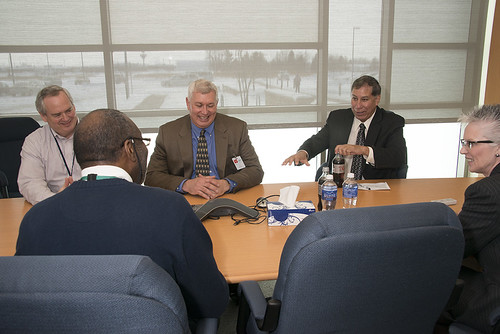
In February, I had the opportunity to visit USDA’s National Centers for Animal Health in Ames, Iowa. This campus hosts employees from both APHIS and ARS, who work together with tremendous collaboration. ARS employees conduct research on diseases of economic importance to the U.S. livestock and poultry industries. APHIS employees work to protect and improve the health, quality, and marketability of our nation's animals, animal products, and veterinary biologics.
Their critical work in research, biologics, diagnostics, training, and coordination with stakeholders is impressive. It is a true science center where the work is intricate, precise, and timely. The scientific research conducted on the campus supports policy decisions, sets international standards and assures the country and the world that U.S. livestock and livestock products are safe for consumers.
Farmers and ranchers represent less than 1% of the U.S. population, yet they provide over 85% of the food we eat every single day. One of the reasons that so few can produce so much stems from the work done at the laboratories in Ames. Their efforts directly support the beef, pork, lamb, poultry, and equine industries, as well as aquaculture and wildlife. The tools they have developed to address animal health and animal diseases are critical to our stakeholders.

Let me give you an example of how important their work is. Pigs are an important animal in China – they are a mainstay of many farmers and a good source of protein for the population. The U.S. pork industry has been a beneficiary, providing live pigs to be exported to China. When the H1N1 influenza virus hit the U.S. a few years ago, this trade was stopped for a period of time. But in summer 2011, live pig trade with China resumed. As part of the agreement to re-open borders, the Chinese government mandated that testing for porcine reproductive and respiratory syndrome (PRRS) be performed only at the Ames facility. Our lab now performs all testing for all live pigs in the U.S. being exported to China. This facilitates multi-million dollar export market for our U.S. industry.
The critical and important work, as well as the commitment and dedication of our USDA employees in Ames does not go unnoticed. For all your efforts to protect agriculture here in the U.S., thank you.

